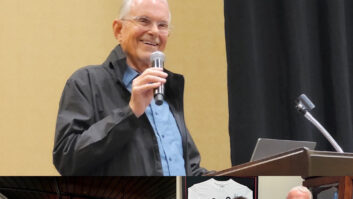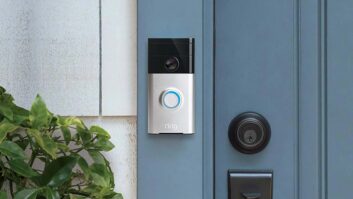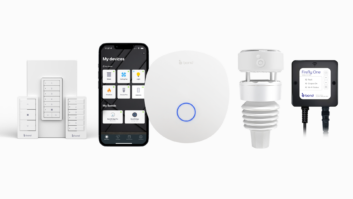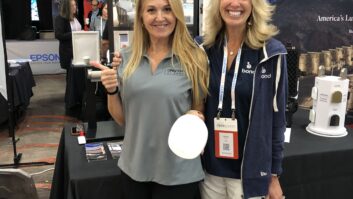The wireless industry’s Universal Charging Solution (UCS) initiative is a boon for the environment, handset makers seeking economies of scale, and most cellphone users.But for accessory makers and retailers, it could reduce add-on sales of aftermarket chargers. And for iPhone aficionados, it might mean they’ll have to trash their existing iPod/iPhone-docking speaker system for a version that connects to future UCS-equipped iPhones.
UCS chargers would use a standard micro-USB five-pin connector and meet stringent energy-efficiency requirements. Compatible cellphones would use a mini-USB port to connect to the charger as well as to exchange data with a PC.
The first UCS-capable phones could arrive in the U.S. as early as next year, given a pledge by major handset makers to the European Union (EU) to begin offering UCS ports on all new phones introduced in the EU beginning January 1, 2010. The EU pledge was announced in late June by Apple, LG, Motorola, Nokia, Qualcomm, Research In Motion, Samsung and Sony Ericsson, as well as by major EU wireless carriers. All of the handset vendors but Apple were also part of an agreement by key members of the worldwide GSM Association to offer UCS chargers and cellphones on a majority of new phone models available worldwide by January 2012, an association spokesman told TWICE. The agreement was announced in February, and the association is working to enlist more members in the initiative. The association’s membership includes 750 GSM carriers worldwide and 200 other companies, including GSM handset and infrastructure makers.
The first UCS-capable first phones arriving in the U.S. will most likely be GSM/W-CDMA HSDPA phones, given the GSM Association’s involvement and the promise by vendors to ship units next year in the EU, where GSM/HSDPA is the wireless standard. GSM handset vendors often develop phone platforms that can be easily re-banded for sale in the U.S.
For the record, Samsung, Sony Ericsson and Nokia said they could not forecast when they would offer UCS phones in the U.S.
When a broad selection of UCS handsets does become available in the U.S. and other countries, consumers and the environment will benefit in multiple ways. Consumers will be able to use their existing charger for a future handset and share chargers more readily with friends, family, and co-workers. Consumers will also be able to buy new phones without the added cost of an included charger, and the price of chargers could fall because of economies of scale.
For the environment, reusable chargers will reduce e-waste by potentially reducing worldwide demand for new chargers by 50 percent to 80 percent, given that 50 percent to 80 percent of handsets shipped worldwide in 2008 were replacement handsets, the GSM Association said. That would eliminate up to 51,000 to 82,000 tons of replacement chargers worldwide, based on estimated 2008 worldwide sales of 1.2 billion mobile phones, the association added.
The chargers will also reduce standby energy consumption by an estimated 50 percent compared to existing chargers because they will adhere to an energy-saving standard that’s more stringent than the EU’s external power-supply standards and the U.S. Energy Star V rating, the association said. Total greenhouse gas emissions caused by manufacturing and transporting the unnecessary chargers will also go down.
Accessory suppliers and retailers, however, will take a revenue hit with the widespread adoption of universal chargers. The NPD Group’s industry analysis director Ross Rubin notes that in the first quarter of this year, chargers accounted for 23 percent of retail-level accessory sales. Many people buy multiple chargers for a single phone, he added. One charger remains home, the other stays at the office, and a third stays in a travel bag.
Owners of iPhone-docking speaker systems could also take a hit. If Apple plans U.S. sales of a future iPhone with USC-compatible micro-USB charging port, consumers might not be able to charge them through the iPod/iPhone speaker systems currently in their homes. That could generate a lot of e-waste.
Apple isn’t providing any clues about how it would resolve this potential issue, but I wouldn’t be too surprised if we encountered some consumer dissatisfaction or retail inventory issues. When Apple launched new iPods in 2007, for example, iPod accessory vendors and retailers were unaware that the models would disable the video outputs of select iPod speaker systems already in inventory for the Christmas selling season.
In addition, Apple’s Touch and iPhone were launched with charging only through the USB pins of their 30-pin connectors, not through their FireWire pins, so many previously available iPod speaker systems couldn’t charge them.
Perhaps an interim solution is as simple as a bundled adapter that connects a UCS cable to Apple’s 30-pin connector. Then Apple can market its iPhone as green and enable future iPhones to charge in existing iPhone speaker systems. A spokesman for the GSM Association, however, doubted that bundling an adapter to connect to a phone’s proprietary connectors would meet the spirit of either the GSM Association announcement or the EU agreement.
Apple isn’t saying what its solution would be. The company declined our request for comment.













